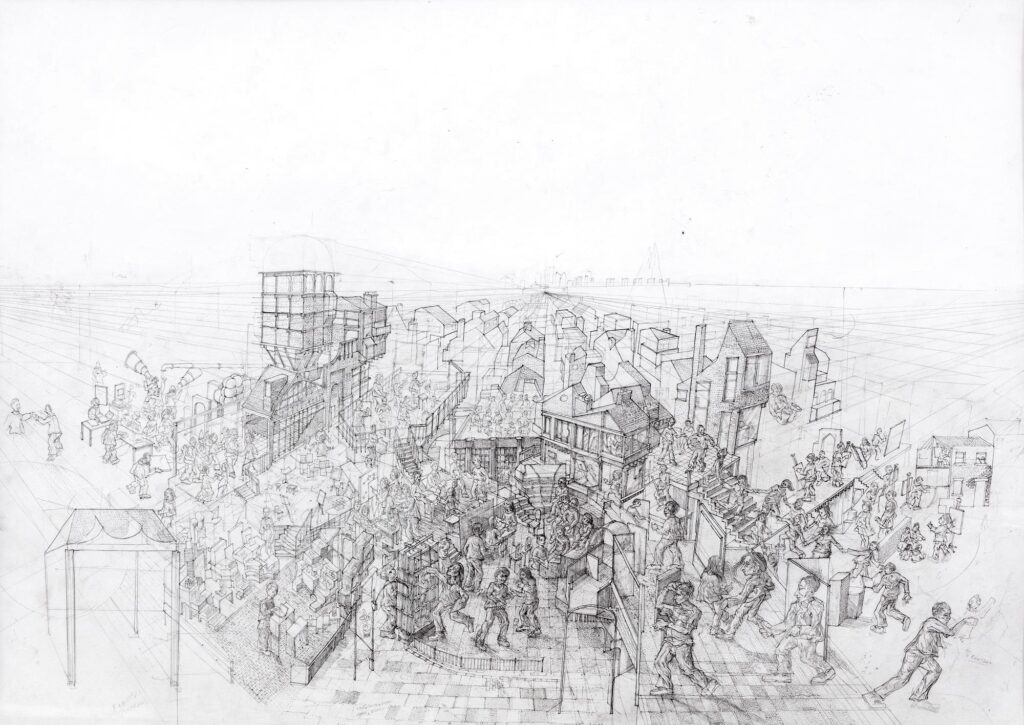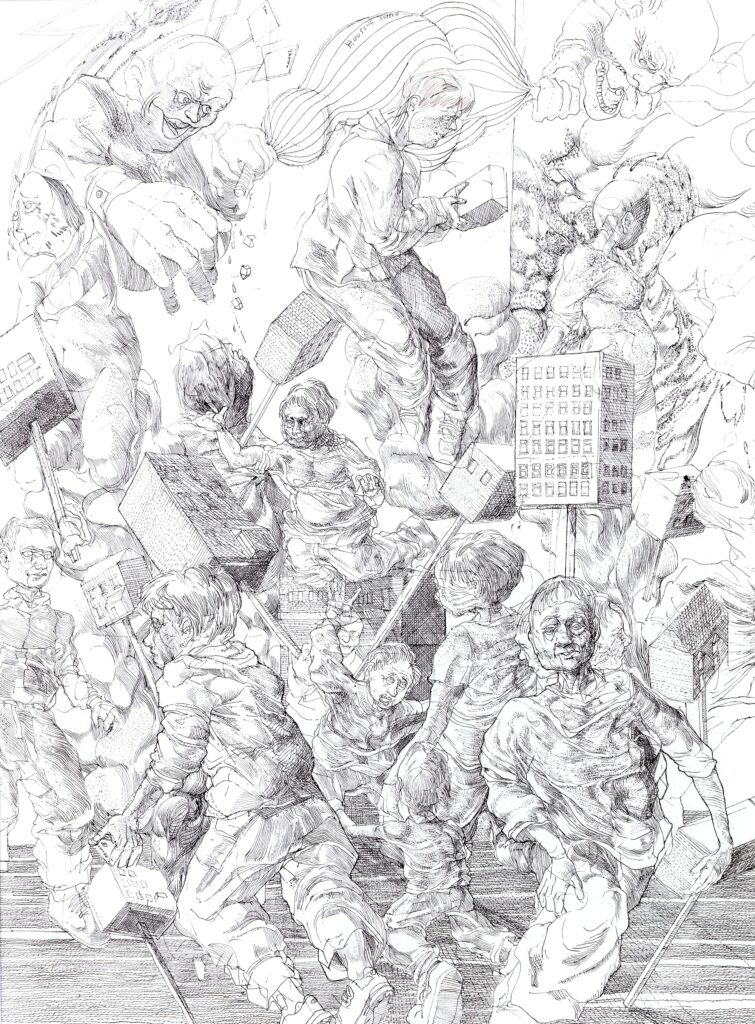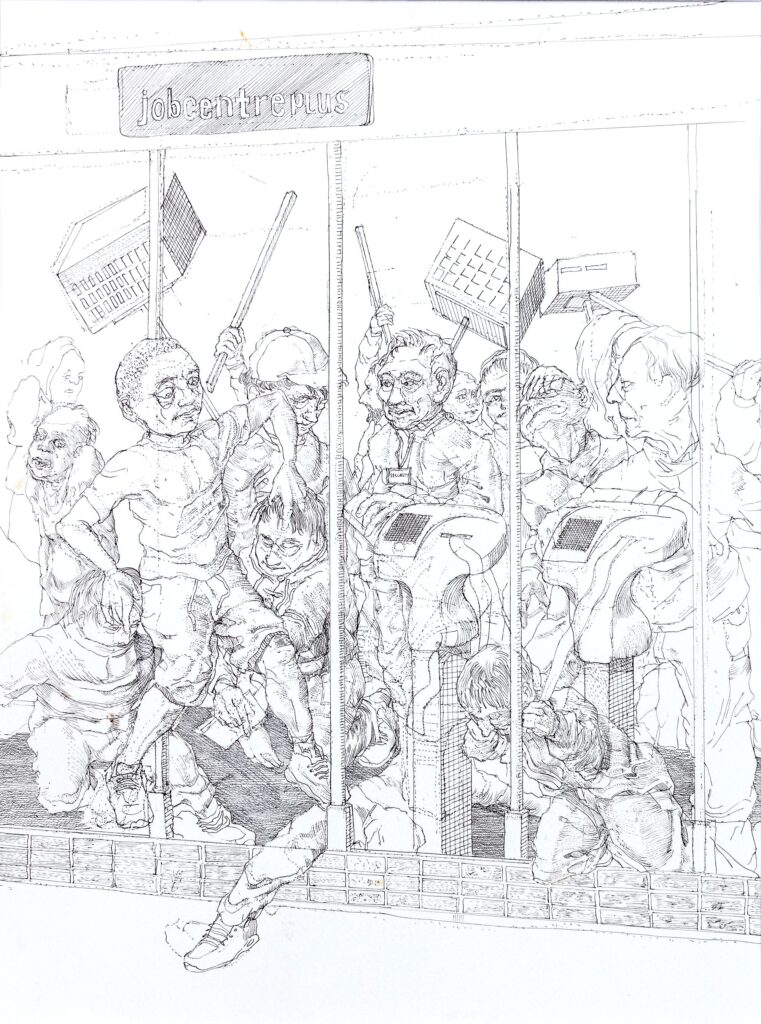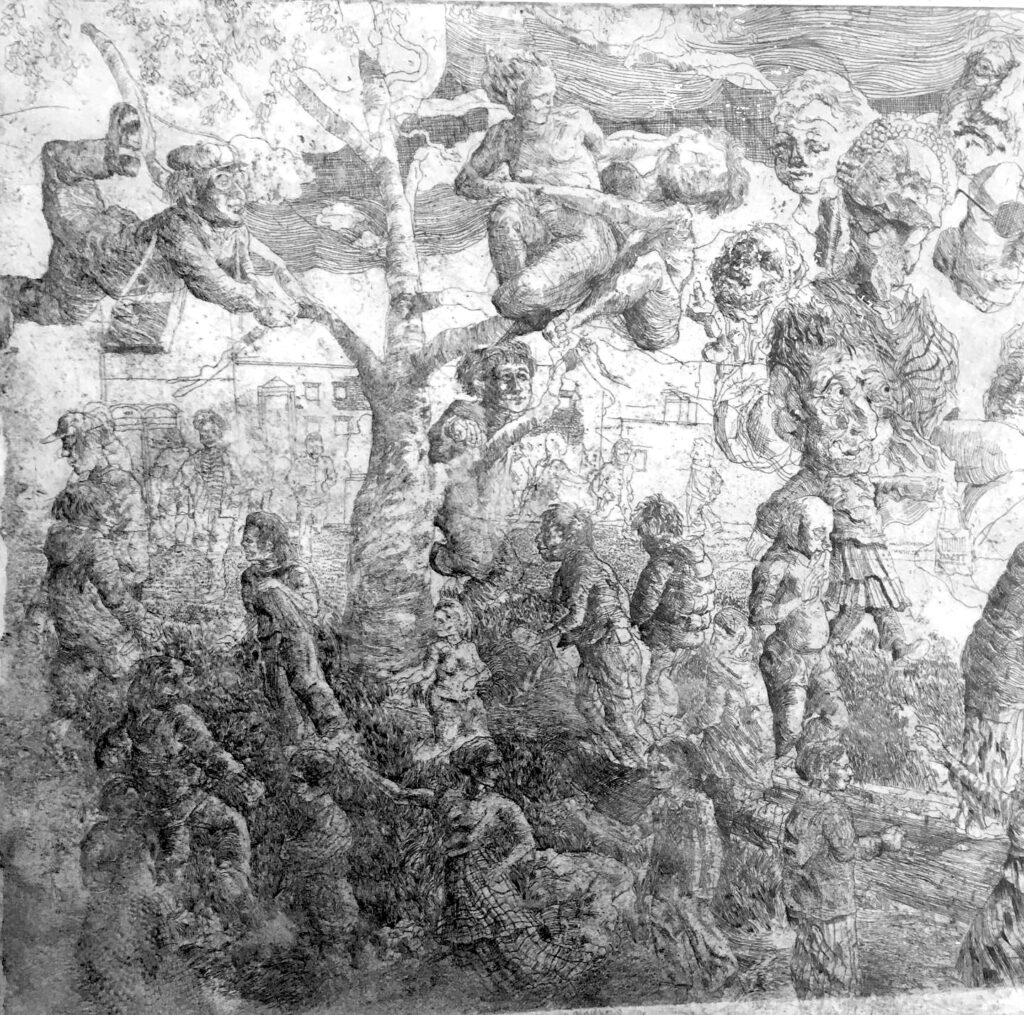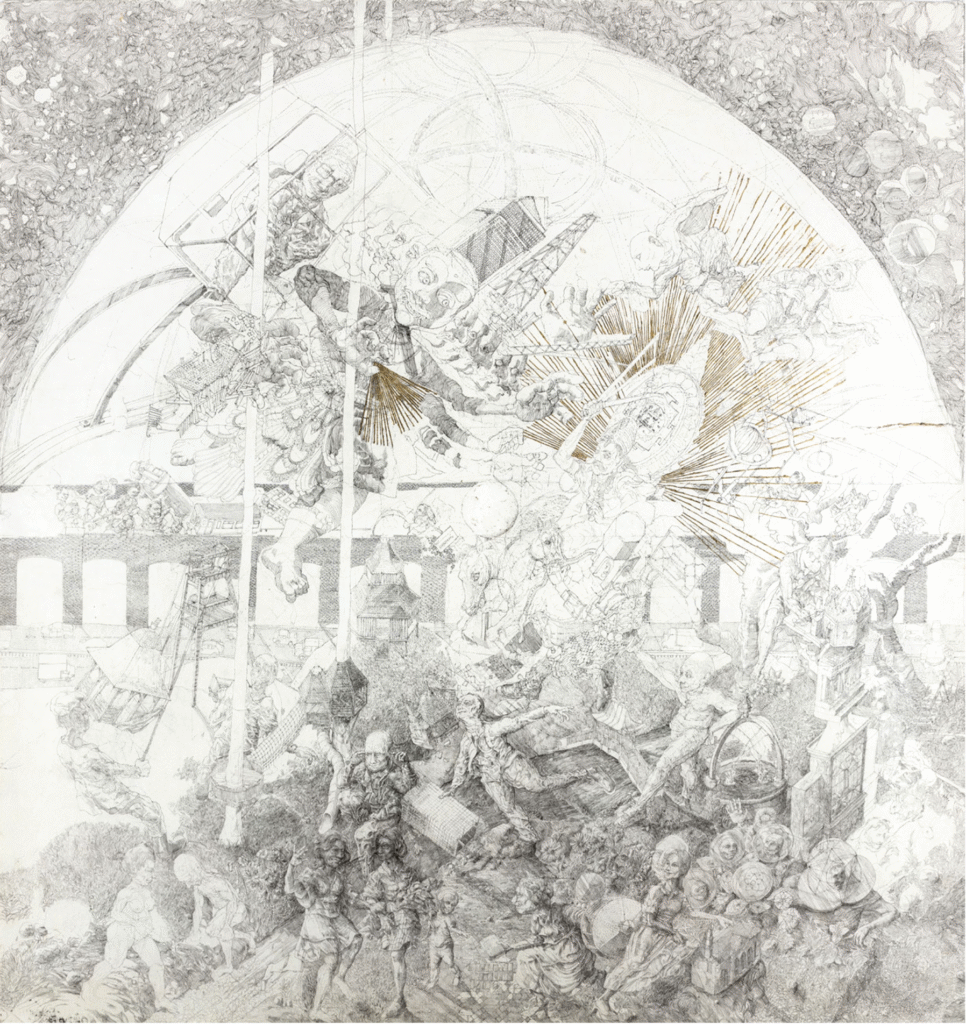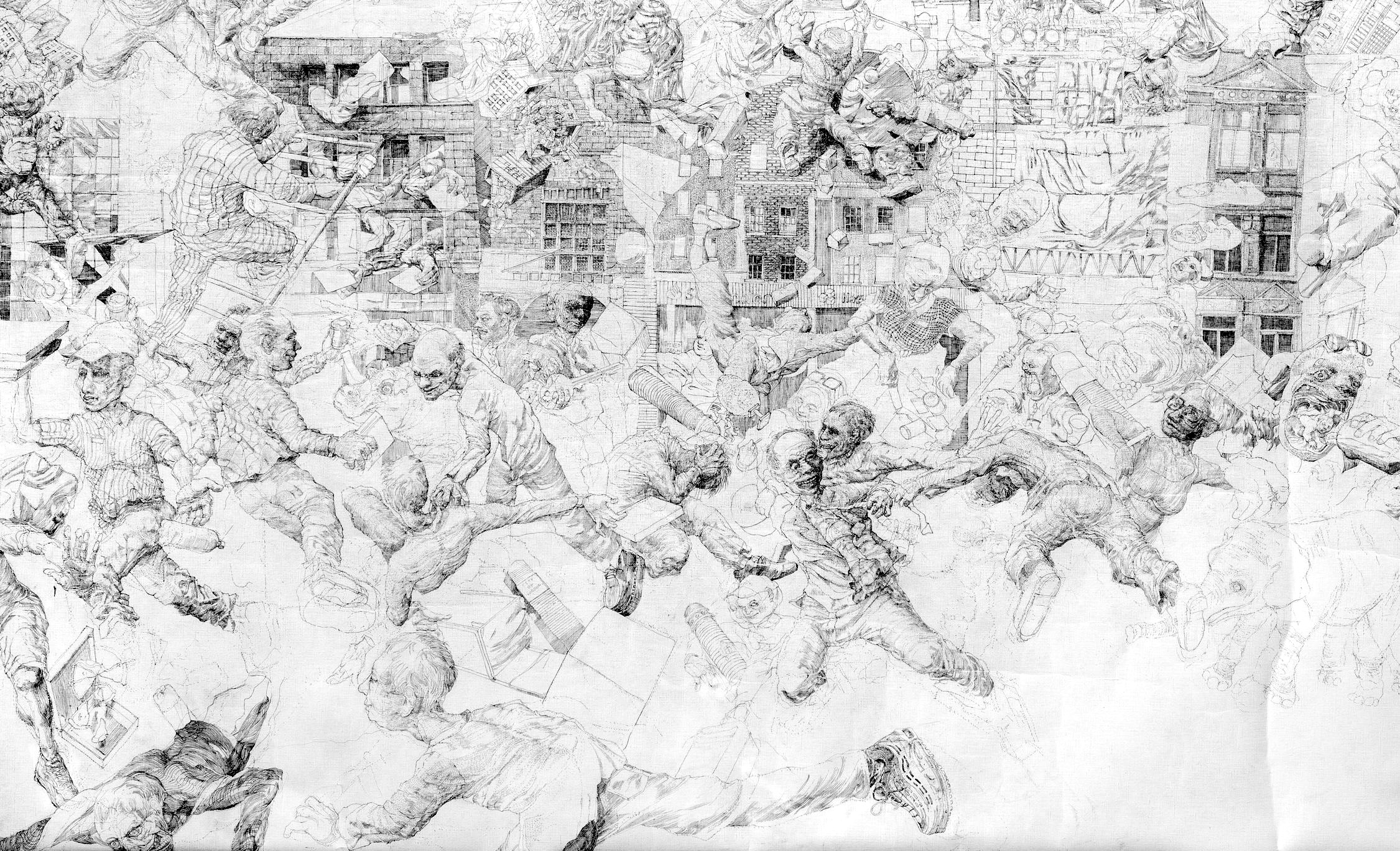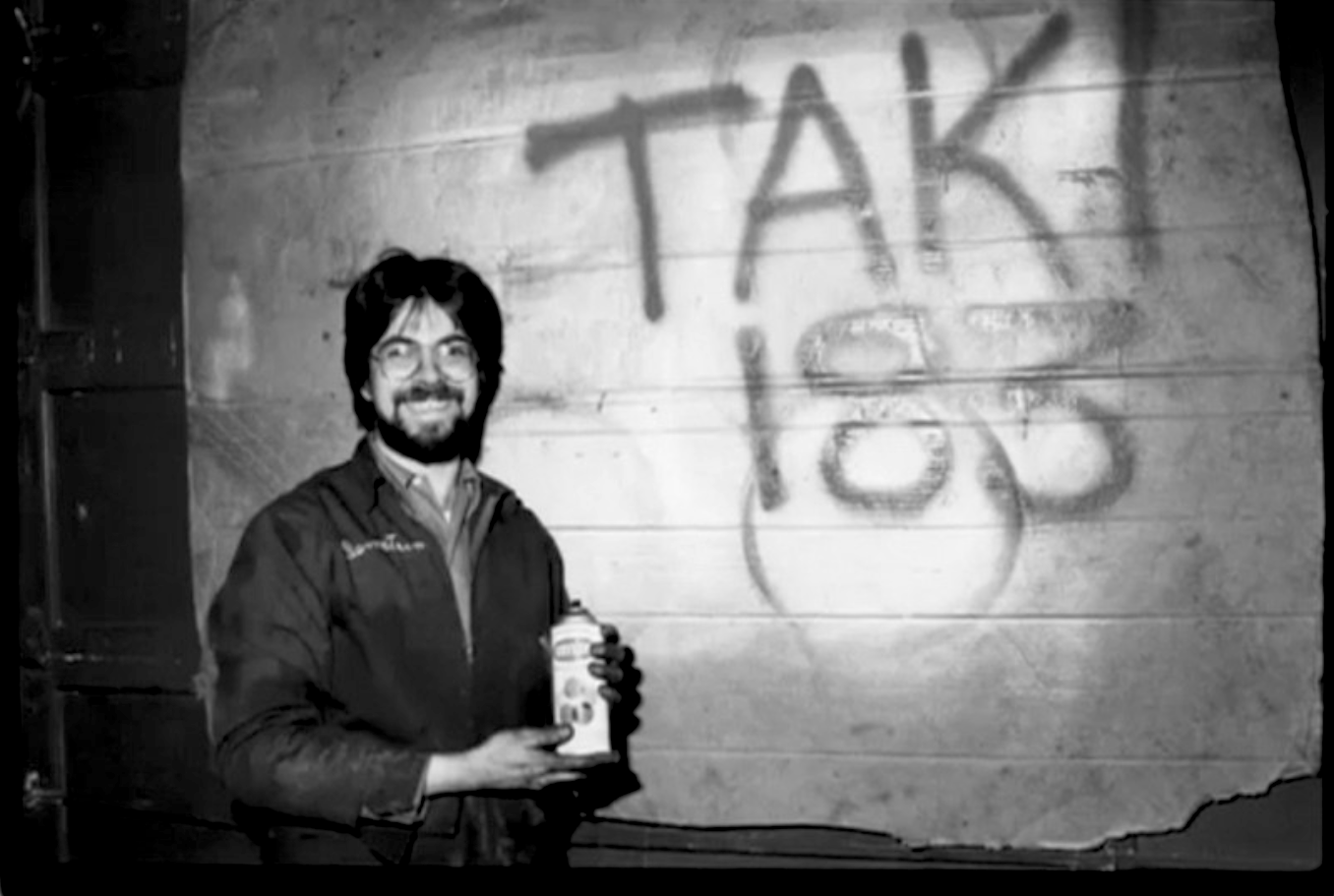London-based artist Louis Pohl Koseda is emerging as one of the most distinctive chroniclers of contemporary British life. His intricate, fine-line drawings map a turbulent, often absurd landscape of economic uncertainty, social dysfunction, and spiritual longing, at once sharply observed and mythically charged.
Raised in East London within a Hare Krishna upbringing, Koseda grew up steeped in spiritual doctrine while surrounded by the socioeconomic contradictions of one of the UK’s most divided cities. This unique upbringing, followed by his professional work closely tied with London’s most under-served communities, a crossroads of mysticism and urban realism, continues to inform his work. References to Hindu epics and Christian eschatology are woven through his visual language, culminating in ambitious pieces like his own interpretation of a “Last Judgement”, where the divine and the bureaucratic collide.
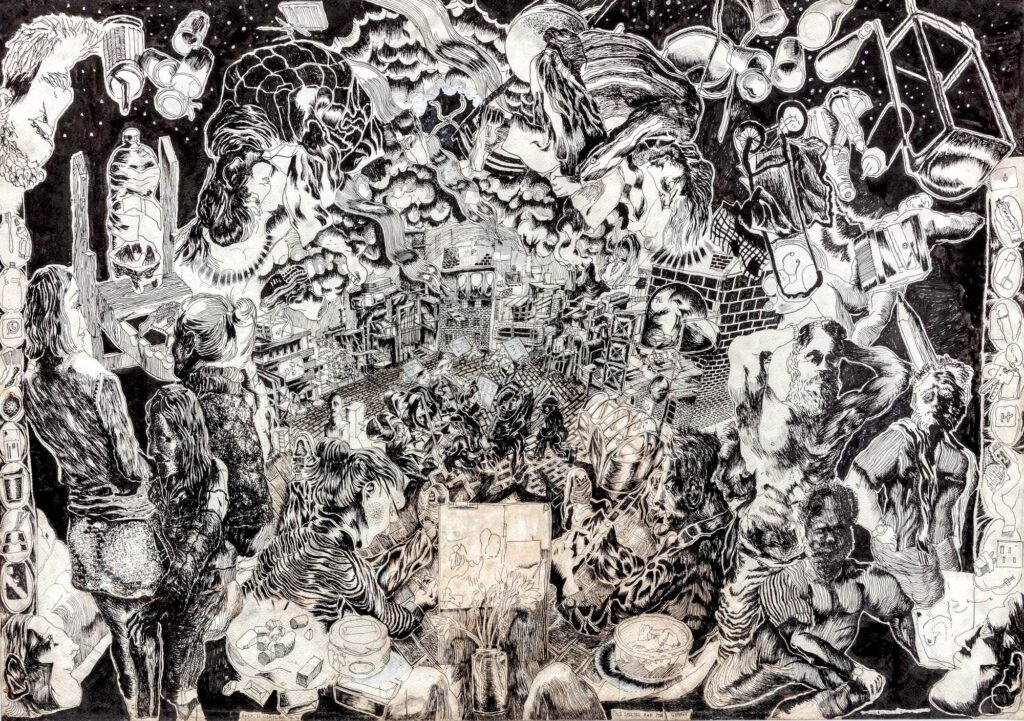
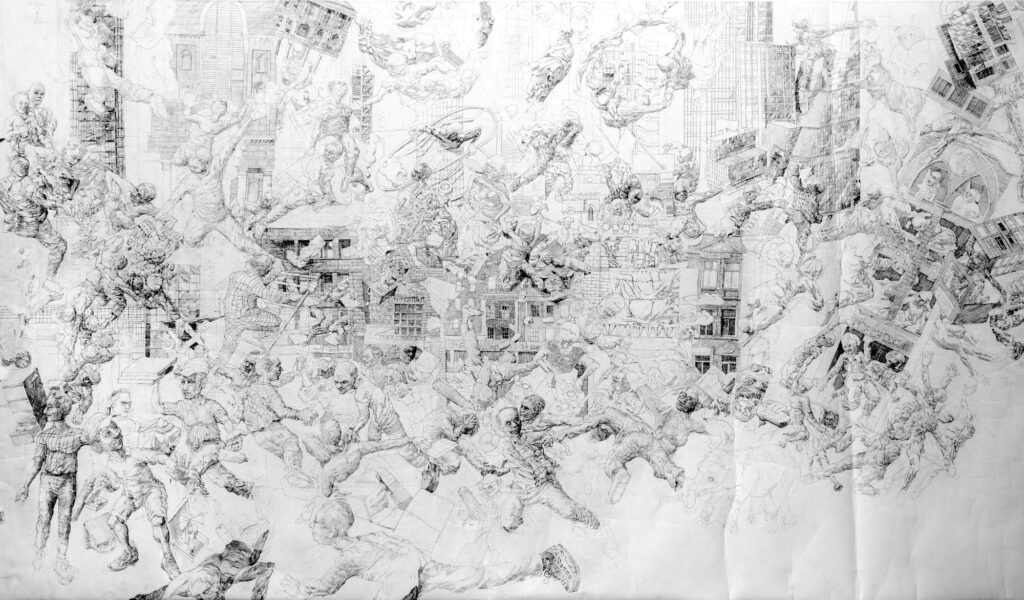
Far from merely being religious allegories in disguise, Koseda’s works are also acts of social research and documentation. “Drawing is both action and research,” he says. “Through the prism of the imagination, we get closer to truth. The pieces are drawn in a live dialogue with the world around us. By revealing how social systems are constructed, I am inviting the viewer to co-create them.” There’s a clarity and conviction in his aim: to make visible the invisible structures that shape modern life, be they economic, political, or spiritual.
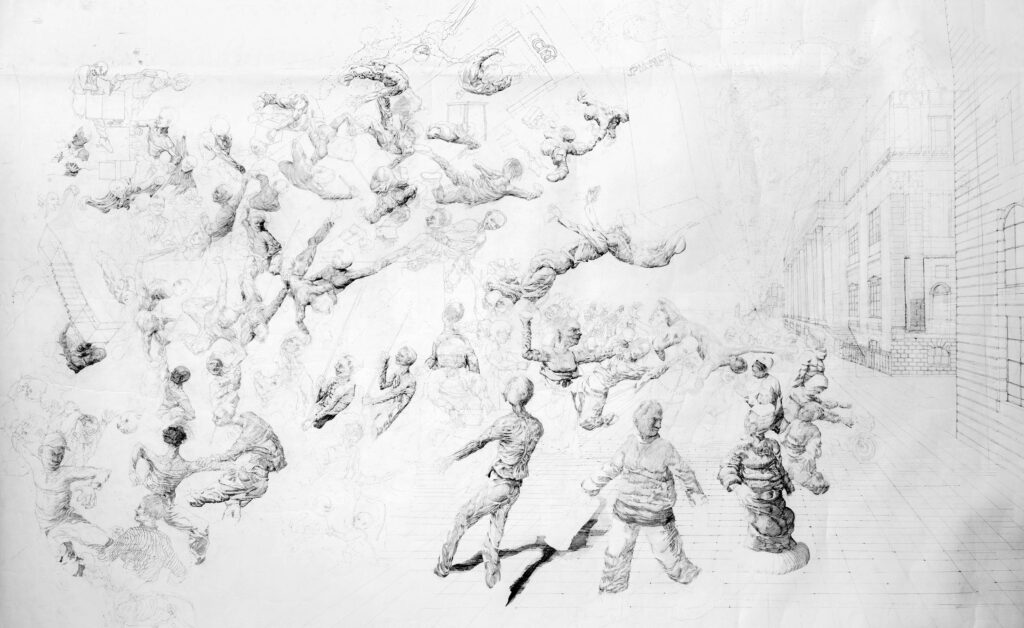

From Architecture to Activism to Art
Before devoting himself to fine art, Koseda trained as an architect at the University of Sheffield. There, he co-founded the Foodhall Project, a community kitchen built on principles of social inclusion and food justice, and later launched the National Food Service, a broader movement to reimagine food access as a public good. These projects garnered recognition, including the RIBA MacEwan Award and multiple Civic Trust Awards, not to mention a World Architecture Festival Award in the category of “Rethink and Renew.”
The experiences gained from these initiatives directly feed into his artistic ethos. Much like his socially driven architectural work, Koseda’s drawings aim to reveal, reform, and reimagine; serving as markers of conflict and contradiction in UK society, from which point further further work can begin.
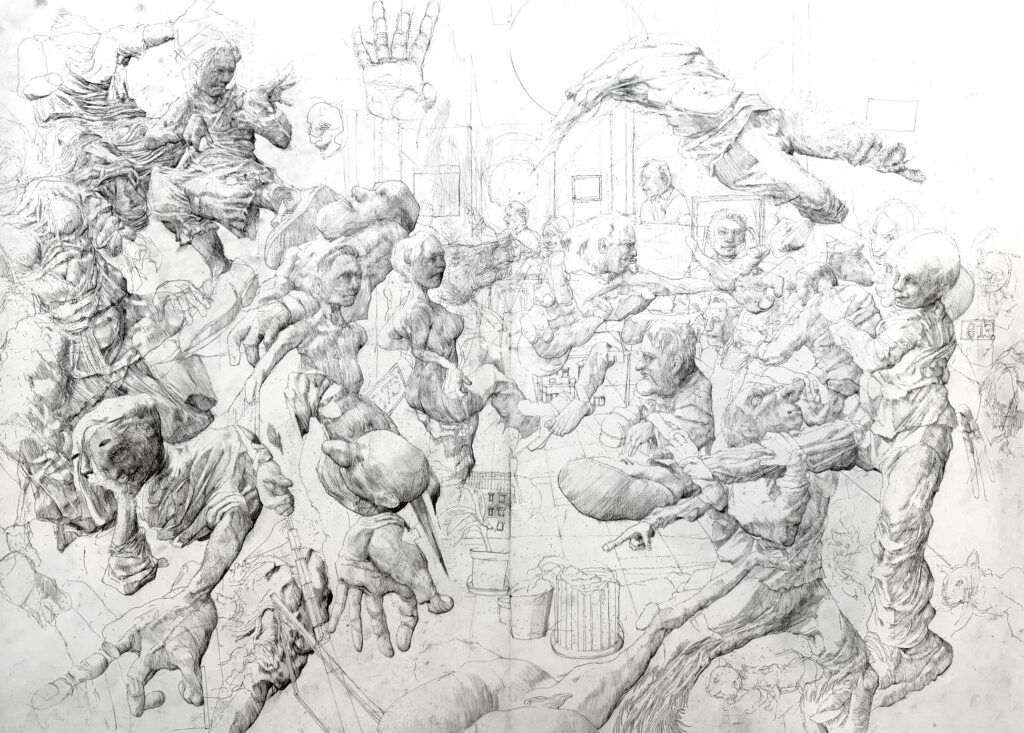
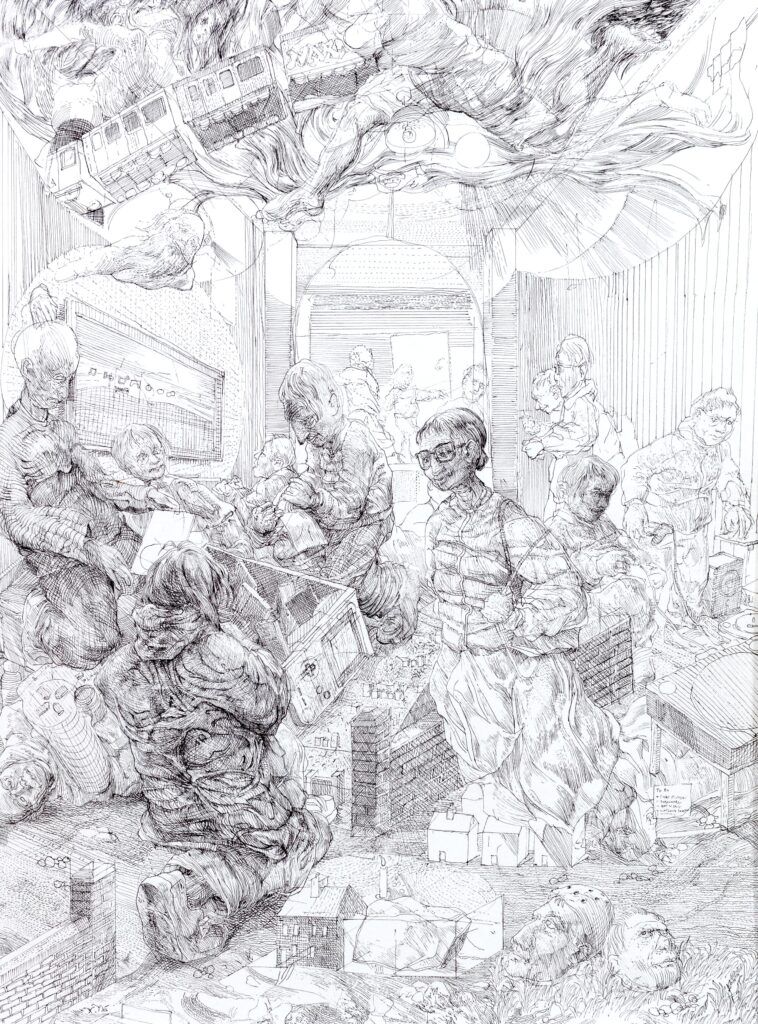

The Drawings: Opera as Allegory, Satire as Mirror
Koseda’s most recent body of work, presented in part through his Royal Drawing School residency, adopts a curious framework: a fictional opera. But this opera, he insists, is “real.” It’s a vehicle for staging the theatrics of British society: its hypocrisies, failures, and glimmers of humanity. From homeless shelters and housing estates to creative studios, financial districts, and public transport, each scene is a compressed tableau of real lives and imagined rituals.
One of his standout works, Peak Interest: London’s Housing Cycle and its Social Effect, depicts spectral figures floating adrift in a claustrophobic, speculative London. The drawing is a direct reaction to Koseda’s own experience navigating the city’s brutal housing market, refracted through economic theory and symbolic narrative.
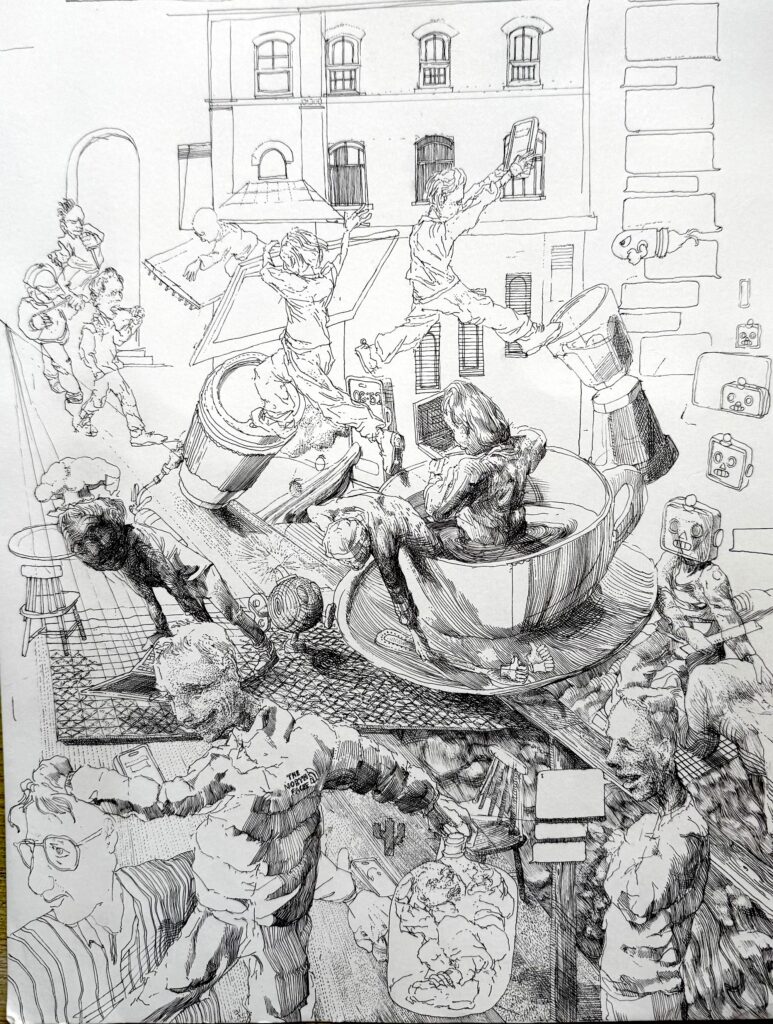
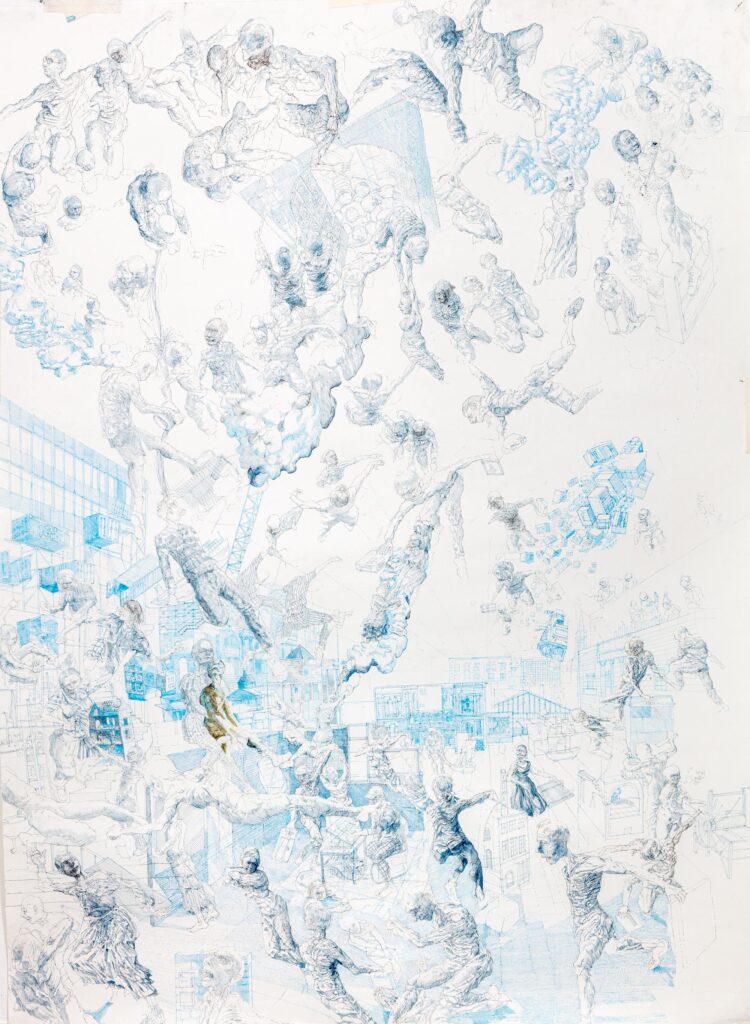
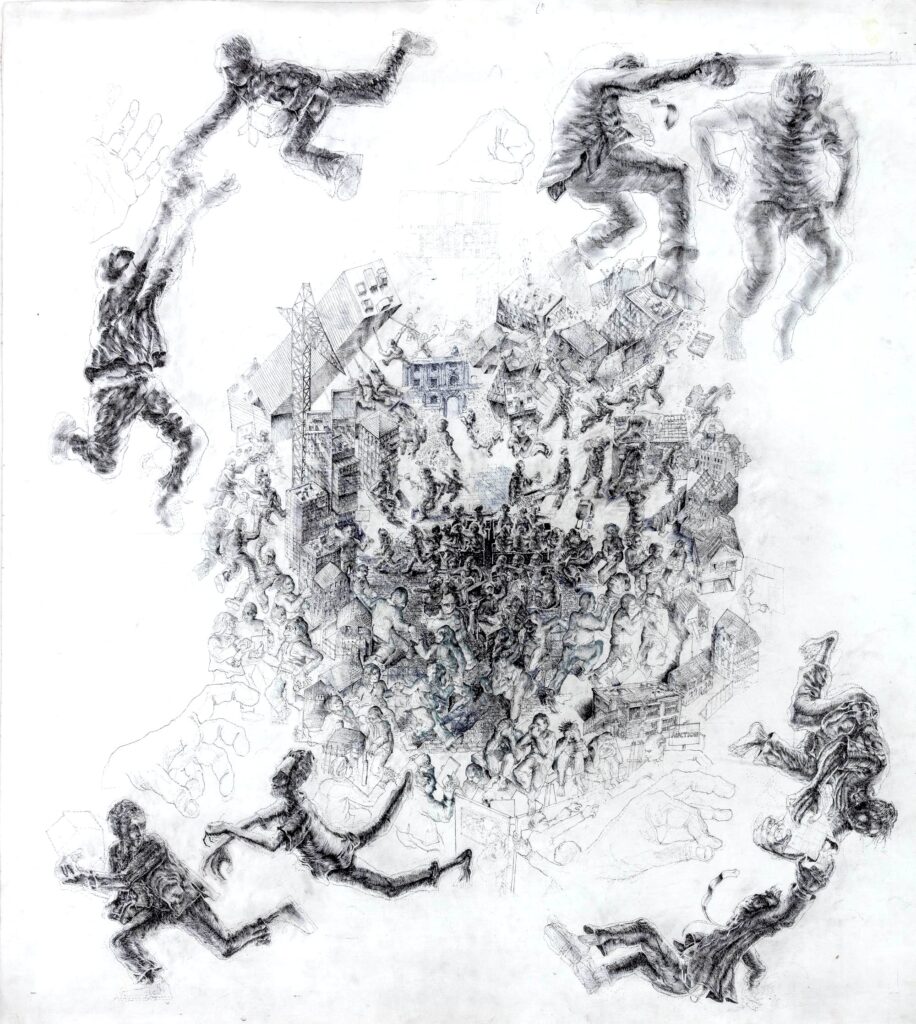
Other works sketch commuters on night buses, financiers in the City of London during moments of market collapse, and even the Julian Assange protests, all rendered with the technical intricacy of a Hercules Segers landscape and the grotesque honesty of a Honoré Daumier sketch, a visual equivalent to the brutal social realism found in the lyrics of Sleaford Mods.
His recurring themes: job insecurity, consumerism, the NHS, education cuts, housing shortages, economic inflation, political alienation, and the spectacle of social media, coalesce into a kind of modern moral theater. His work doesn’t moralize, but it does insist on complexity, on contradiction, and on critically seeing the systems we usually take for granted.
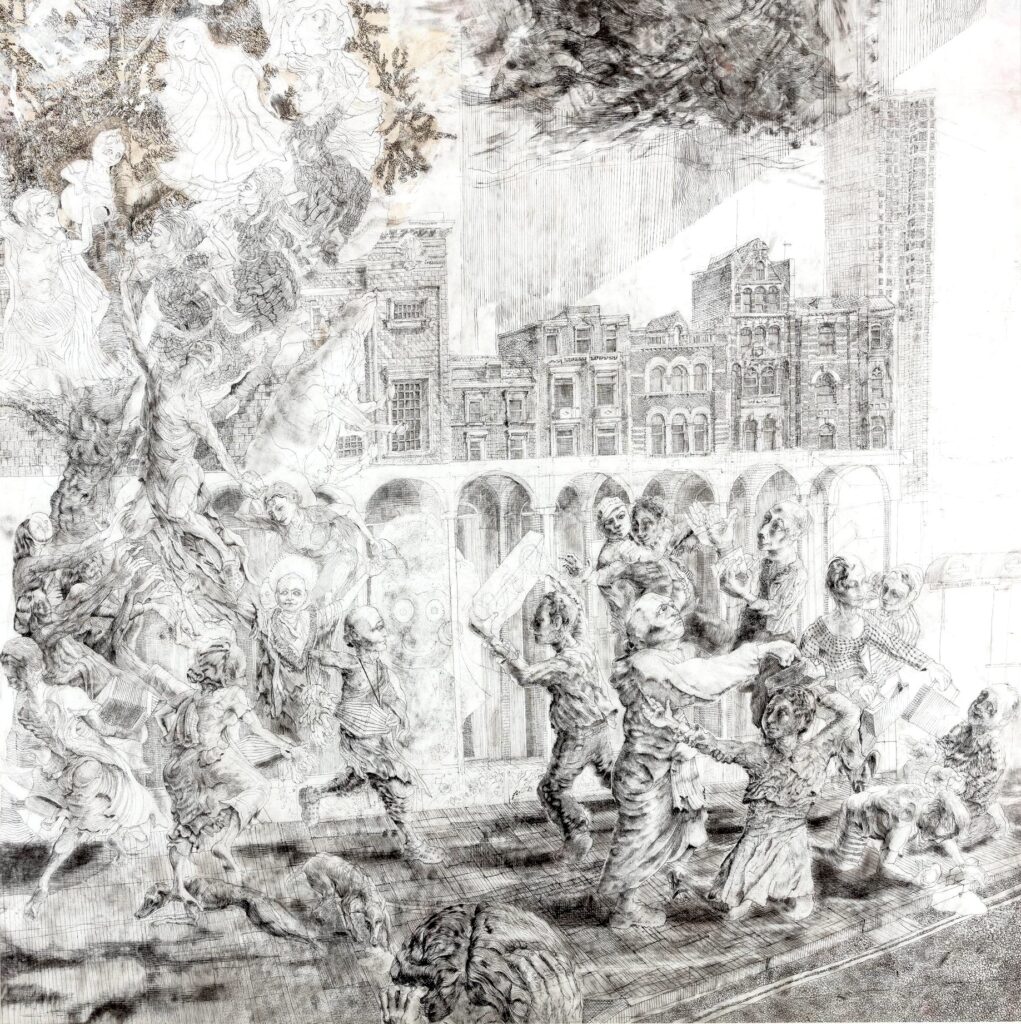
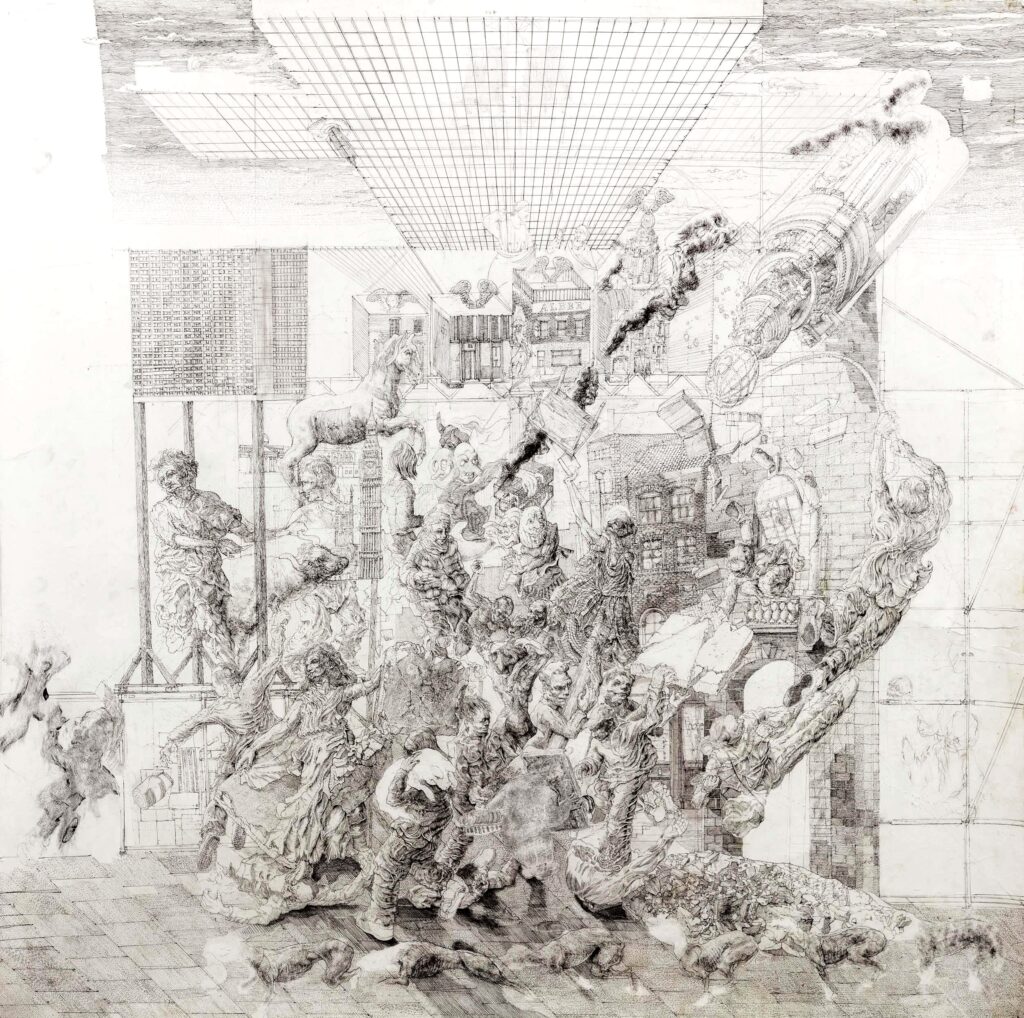
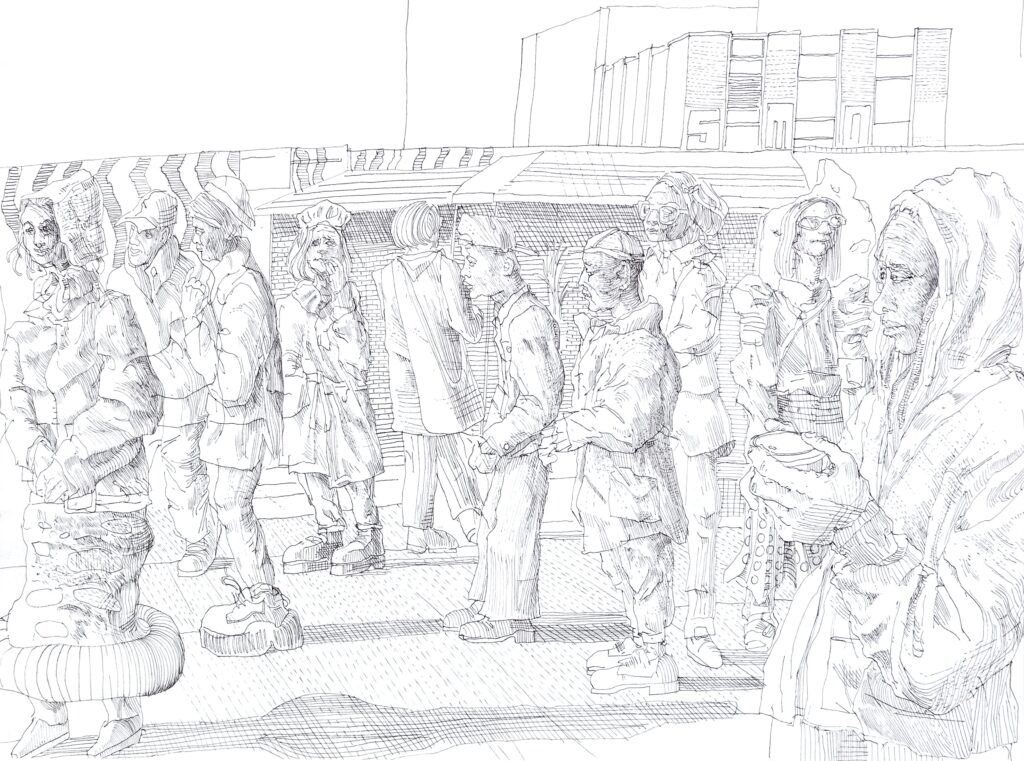
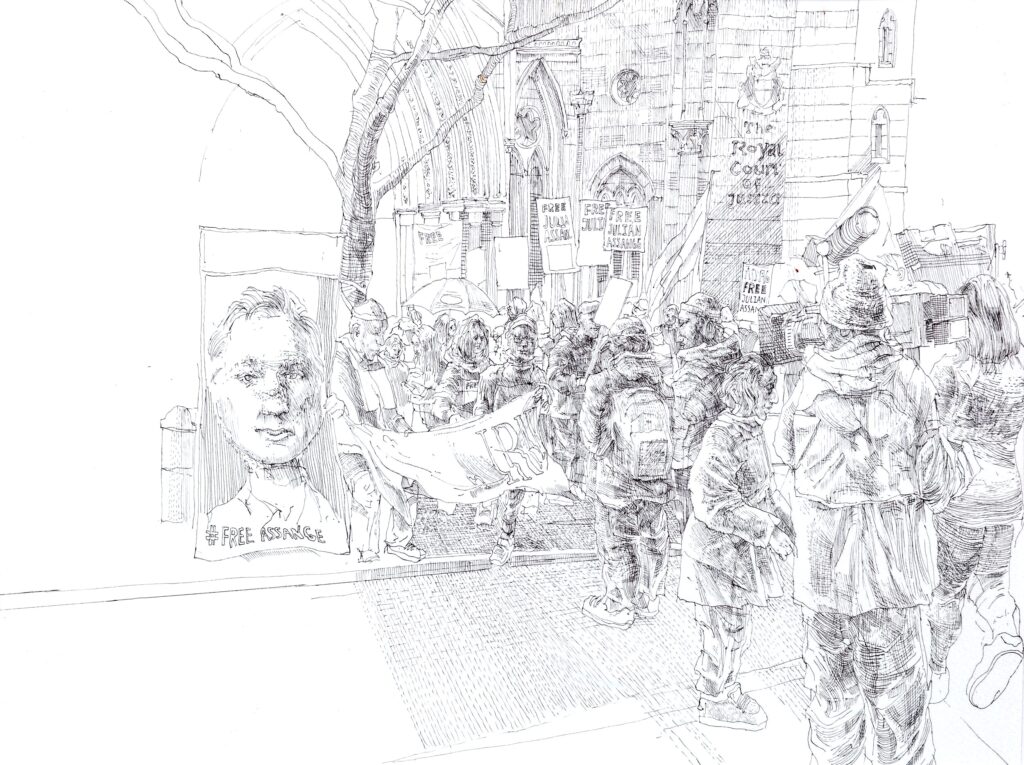
Recognition and Relevance
Koseda’s work has been exhibited internationally, including in the British Pavilion at the 2020 Venice Biennale, and he received the Christie’s Award this year. His pieces resonate with critics and viewers alike not just because of their complex visual detail, but because they offer something increasingly rare in contemporary art: coherent, unsanctimonious, and grounded social critique.
By collapsing the boundary between documentary and fiction, Koseda’s drawings serve as maps to a spiritual-political London, where class tension, bureaucracy, mythology, and imagination all share the same stage. His imagined opera may be fictional, but the truths it reveals are uncomfortably real.
